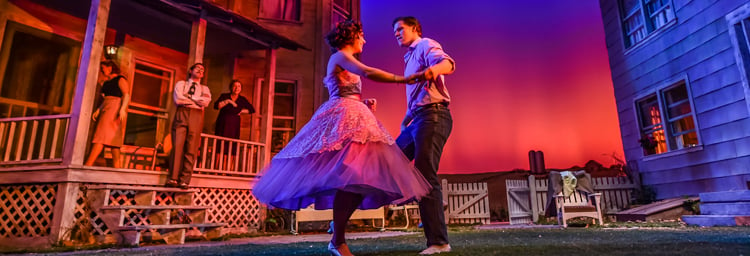When Lighting Designer Jimmy Lawlor sat down with Director Dr. Dennis Beck to discuss their upcoming production of Picnic at James Madison University, they agreed that a realistic approach to design was in order and that the color, direction, and movement of the light needed to be supported by the reality of the story. One aspect of the lighting design was establishing time-of-day – specifically sunrise and sunset, which Lawlor accomplished mostly with color using Roscolux and Gamcolor filters.
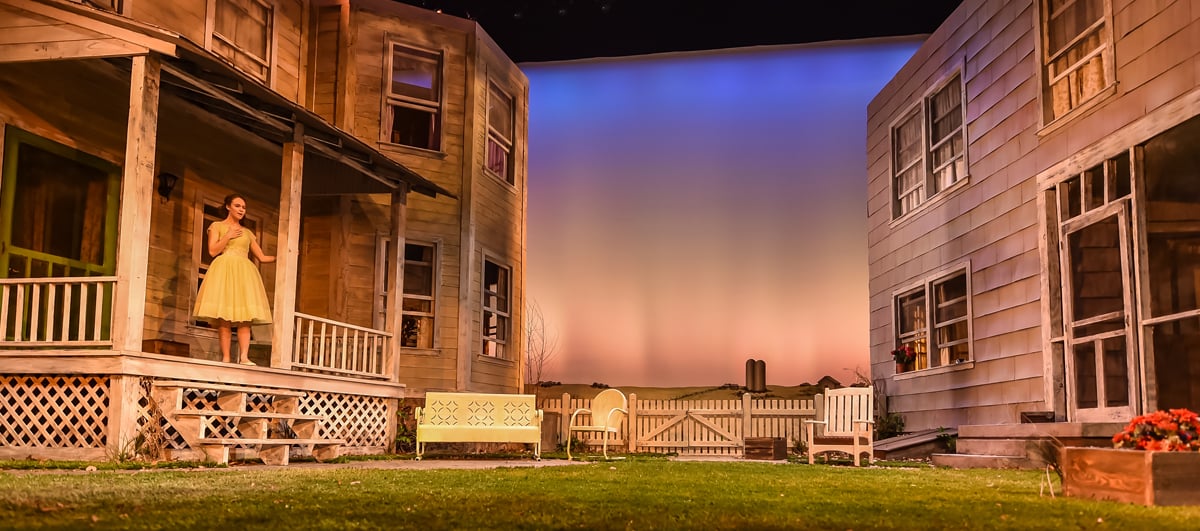 A scene late in the afternoon. Note the high light angle. That angle will drop and the colors will get more saturated as sunset approaches. Pictured: Katie Ciszek
A scene late in the afternoon. Note the high light angle. That angle will drop and the colors will get more saturated as sunset approaches. Pictured: Katie Ciszek
The play is set during Labor Day weekend, 1953 in a small Kansas town and the production’s set consisted of two large houses. The two houses on stage were interesting because, during early discussions with Set Designer Howard Jones, Jimmy expressed his desire to “really lean on saturated sunrise and sunset washes.” Inspired by this idea, Howard thought it would be effective if the houses, which were almost white, were treated like 2 big cycs that Jimmy could paint with colored light.
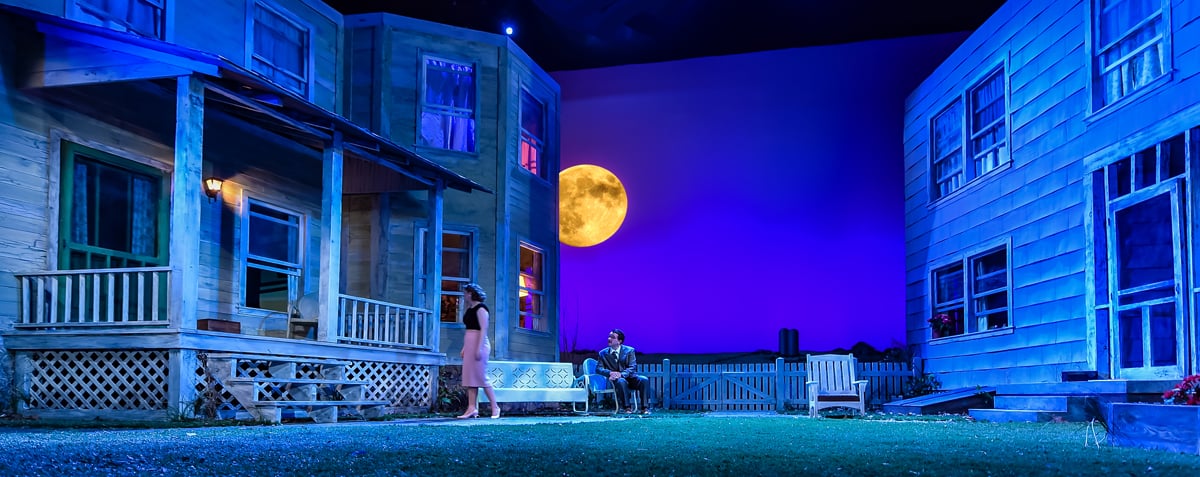 A deep blue night mix (G880+ G845) with a golden harvest moon (R81174 + R17). Pictured: Rob Condas, Grace Vaughan
A deep blue night mix (G880+ G845) with a golden harvest moon (R81174 + R17). Pictured: Rob Condas, Grace Vaughan
Because the show unfolds linearly, tracking the time of day with lighting was very important. “Establishing the cardinal directions early on was very important,” Jimmy notes, “because it told us where the sun and moon would rise and where the sun would set. We knew what action had to occur during those moments and since we were embracing the natural shadows of the set, we wanted to make sure the actors' blocking took into account where those shadows would fall.”
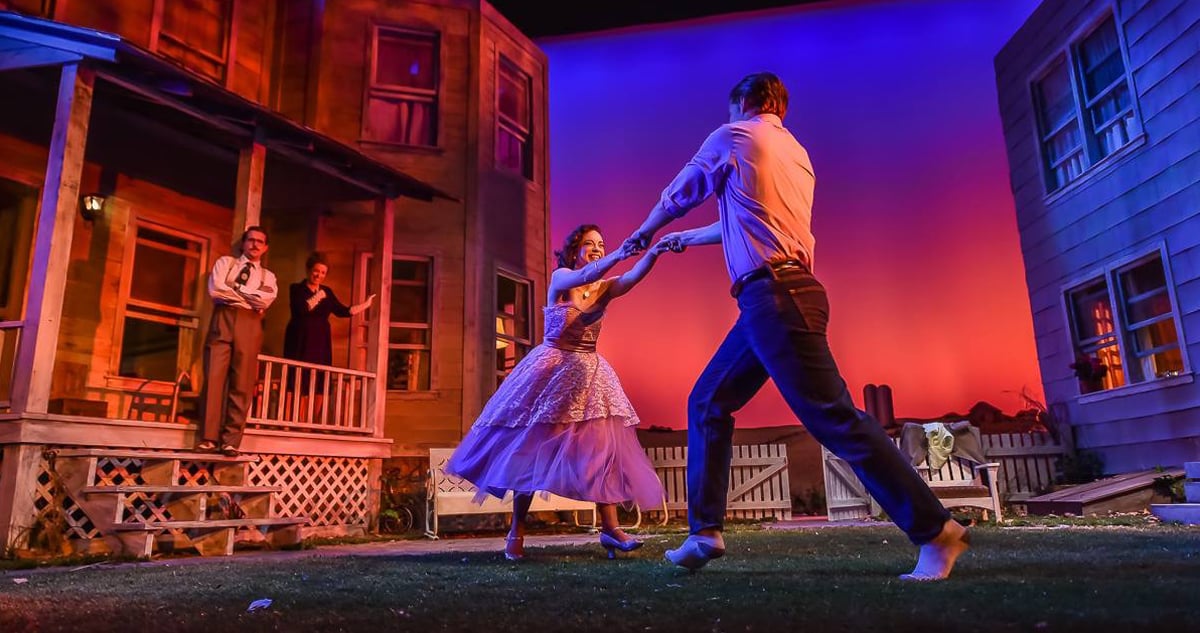 The height of sunset. Note the lower light angles and the super saturated colors. Pictured: Melissa Carter, Elana Swartz Stauffer, Rob Condas, Joey Cassella
The height of sunset. Note the lower light angles and the super saturated colors. Pictured: Melissa Carter, Elana Swartz Stauffer, Rob Condas, Joey Cassella
Jimmy marked the time of day for the audience with lighting and color – especially during scenes that took place during sunrise and sunset. The light that struck the actors on stage and the two onstage “House-Cyc’s” was most important to him. This area he lit with tungsten PARs (because he loves their “amber drift” as they dim), and he carefully chose a blend of Roscolux and Gamcolor filters to create his sunrise & sunset palettes. Once the onstage colors were established using gels, he found LED fixtures that he could tune to match his colored PARs in order to illuminate the rear cyc.
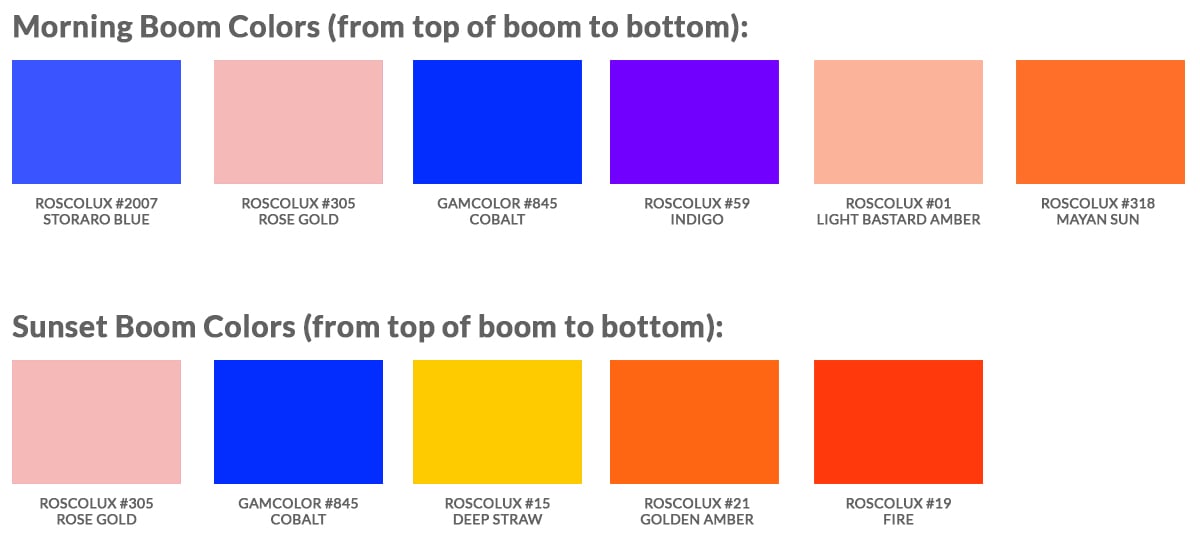
The inspiration for Jimmy’s sunrise and sunset effects actually came from the play's script:
Rosemary: Howard, look at that sunset!
Howard: (Turns to look.) Pretty, isn't it?
Rosemary: That's the most flaming sunset I ever did see.
Howard: If you painted it in a picture, no one'd believe you.
This bit of dialogue struck a chord with Jimmy because he’d always wanted to design a show with strong, vibrant sunsets, but he felt the same way – no one’d believe it. “I based the design on a reaction I always have when I see sunsets (or the rare sunrise that I'm awake for). They are always so beautiful that I always fear that if put them onstage – no one would believe the results were based on actual research.”
Morning is the only time of day seen twice in the show, so Jimmy had to figure out how the morning scene that begins the show would appear visibly different than the morning scene that ends it. Because Act 3 begins as if the characters were seeing a new beginning, Jimmy decided that the Act 3 sunrise needed to be much more saturated than the morning scenes in Act 1.
Creating both morning palettes necessitated a 21' high 'morning boom' with a double set of PARs hung every 18" from bottom to top. Utilizing the same palette of colors, Jimmy was able to mix together two very different looks. During the Act 3 morning scene, for example, Jimmy mixed the G845 and the R318 at different intensities to work through a series of saturated lavenders and pinks that developed throughout the final morning action.
We’re thrilled that Jimmy Lawlor created all of the vibrant colors for this production of Picnic using Roscolux and Gamcolor filters. To see more of Jimmy’s inspired lighting design work, visit his website: lawlordesign.com. If you’d like to learn more about all of our color filters, and create stunning color palettes of your own, explore the Rosco myColor web app.
Picnic
James Madison University
Director: Dr. Dennis Beck
Lighting Design: Jimmy Lawlor
Scenic Design: Howard Jones
Costume Design: Stephen Marks
Photos by: Richard Finkelstein

